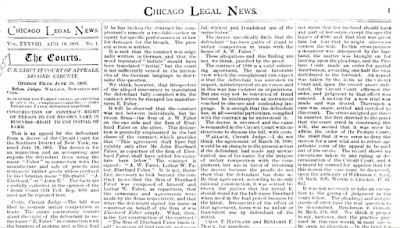This article has been edited and included in The Leadhead's Pencil Blog Volume 4; copies are available print on demand through Amazon here, and I offer an ebook version in pdf format at the Legendary Lead Company here.
If you don't want the book but you enjoy this article, please consider supporting the Blog project here.
After the death of Eberhard Faber, founder of the American Faber pencil operations, his two sons – Eberhard, named for his father, and Lothar, named for his uncle, head of the German firm of A.W. Faber – really grabbed the bull by the horns. According to the Eberhard Faber Pencil Company Historic District Designation Report prepared by the New York City Historic Landmarks Commission, only two of the surviving buildings which now form the Faber industrial complex were constructed prior to the firm’s relocation to Brooklyn in the summer of 1872: 100 West Street, into which the company first moved, and 98 West Street, built according to the Commission around 1870. Beginning in 1881, the brothers embarked on building projects which eventually filled an entire city block with the company’s facilities:
As the Eberhard Faber Pencil Company’s star rose – literally, as the star within a diamond logo was placed all over the firm’s buildings – tensions were building between the American and German operations. Although I haven’t found a record of exactly what those tensions were, developments in the Germany contingent certainly suggest what happened..
In 1881, Lothar Faber was ennobled by the Kingdom of Bavaria and thereafter was known as Baron Lothar Von Faber – at least in Germany. In 1893, the Baron lost his only son, Baron William von Fabe: for the first time since 1761, there would be no male heir to whom the great A.W. Faber pencilmaking concern could be passed:
Just three years later, on July 26, 1896, Baron Lothar von Faber died, and already, details of the German company’s history are becoming confused (note that A.W. Faber, not Kaspar, is credited with establishing the firm, and the year is wrong):
Next in the royal Faber line, set to inherit the fortune of the house von Faber and assume command of the company, was Lothar’s granddaughter, the 19-year-old Baroness Ottilie von Faber, born in 1877. According to Wikipedia, in order to keep the pencil works in the hands of the Faber family, a marriage was arranged with Count Alexander Friedrich Lothar von Castell-Rüdenhausen. Count Alexander, given a choice between nobility and control of the Faber family fortune, renounced his title like a hot rock and was awarded a new title of the Count von Faber-Castell. Even though he and Ottilie divorced in 1918, it was Count Alexander von Faber-Castell, who kept the company and even the Castle Stein.
I have a hard time writing the preceding sentences without sarcasm. Assuming that Eberhard and his progeny had any American qualities rub off on them, it’s not hard to see the widening rift fueled by the German side of the family increasingly acting royal, culminating in 1898 with an outsider assuming control of the company for the first time in more than a century and, with all of the pomposity of a nineteenth-century European patrician, making some very royal sounding, easily ignored pronouncements.
One of the first of these was that, while the German firm changed its name to Faber-Castell to reflect the family’s new title, the American firm could not use the name “Faber” alone in connection with the sale of pencils. The royal pronouncement was embodied in a legal contract, drawn up by A.W. Faber and signed by A.W. Faber and John Eberhard Faber, as a copartner in the Eberhard Faber partnership, on March 16, 1898. The Eberhard Faber Pencil Company was formally incorporated in 1898.
To illustrate how much of a gap had developed between the two houses, though, a legal dispute arose over the meaning of the contract, the source of which was in the translation of the agreement from the original German into English. The American Fabers thought that it was permissible under the contract to stamp “E. Faber” on the company’s products.
The German house, however, insisted that preceding the word “Faber” with just the initial “E.” violated the contract, and sued Eberhard Faber for the alleged infraction in 1904:
Note that after a mere six years of marriage into the family, “Alexander von Faber-Castell” is already described as “the sole surviving member of the copartnership of A.W. Faber.” In 1904, he was initially awarded a permanent injunction prohibiting John Eberhard Faber from stamping pencils “Faber” or even “E.Faber,” and also awarded all profits from pencils stamped “E. Faber.”
On appeal, the Courts reversed this decision in an opinion published May 28, 1905. “We think, however, that irrespective of the alleged inaccuracy in translation the defendant fully complied with the contract when he stamped his manufactures E. Faber,” the Court held.
Undaunted, Alexander von Faber-Castell appealed to the United States Supreme Court, which issued a terse, one-word decision on December 4, 1905: “Denied.” Von Faber-Castell v. Faber, 199 U.S. 609 (1905). That was, literally, the final word. Whatever fuzzy family relationship existed prior to 1898 between the German house of A.W. Faber and the American Eberhard Faber Pencil Company was gone.
The next installment in this series is posted at http://leadheadpencils.blogspot.com/2016/01/end-of-dynasty.html).





No comments:
Post a Comment